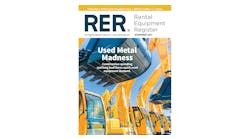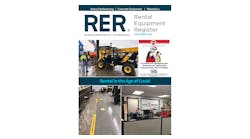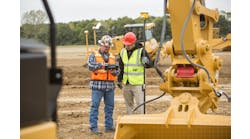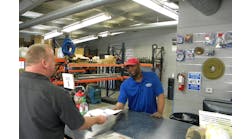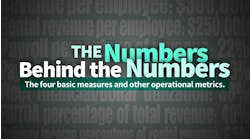A lot of useful articles have been written on aerial work platform safety to help end-users and jobsite supervisors increase their knowledge of proper machine use. Many of these articles focus on selecting the right machine for the job, proper use of personal fall protection systems, machine inspections and machine maintenance. While these aspects of machine operation are definitely important, they are focused on the equipment. Equally important is to focus on the environment in which that equipment will be deployed.
An important note: While articles can be helpful, there is no substitute for proper operator training from a qualified training entity or a qualified trainer. Conducting a proper worksite hazard inspection cannot be adequately presented in an article. It is my hope to present enough information that would motivate operators and supervisors to register for Aerial Work Platform General Training.
Where does Worksite Hazard Inspection fall within the Operator Training curriculum?
Worksite Hazard Inspection is a major part of any Operator Training program that meets industry standards prescribed by American National Standards Institute (ANSI). JLG offers a Train-The-Trainer course that is designed to train those responsible for Operator Training and Aerial Work Platform Safety. Trainers who have been through our program teach a five-step approach to AWP safety. Worksite Hazard Assessment is the third step in this approach and the training will help any operator and supervisor conduct this the right way.
Why is conducting a worksite hazard inspection important?
The simple answer is that it is required by section 8.7 in the appropriate ANSI standard, A92.3, A92.5 and A92.6 covering Manually Propelled Elevating Aerial Platforms (push-around lifts), Boom-Supported Elevating Work Platforms (boomlifts) and Self-Propelled Elevating Work Platforms (scissorlifts) respectfully.
Evaluating the jobsite is complementary to evaluating the equipment. You can have properly functioning equipment working in an unfavorable environment or you can have a safe environment with improperly functioning equipment. Unless both the environment and the equipment are analyzed, an operator is increasing his or her risk.
Operating an aerial work platform without evaluating the jobsite can be likened to playing football without knowing the other team. You can have good players and good plays and know how to play the game, but without a game plan based on the other team, you will be less confident and have a lower chance of success.
What are the elements of worksite hazard inspection?
JLG's Train-The-Trainer course presents these elements as ICE - 100 (See Figure 2, page 40). ICE -100 is an acronym standing for: I - Identify, C - Communicate, E - Eliminate, 100 - 100 percent avoidance. Using this acronym helps the operator remember and apply the proper safety procedures.
How often should the operator conduct a worksite hazard inspection?
ANSI specifies that a worksite hazard inspection be conducted prior to every use and every operator and continuously during use of the machine. While it may seem unnecessary, jobsite conditions can change frequently. Whether it is the result of overnight weather, changing equipment and materials, new obstacles and increased personnel, these changes can dictate a change in game plan when it comes to using an aerial work platform.
What should one look for when conducting worksite hazard inspection?
The site analysis must include all areas where the machine will be near — not just the work area. From the spot where the machine is stored, it is best practice to evaluate the paths of travel as well as the work area.
For the paths of travel, one should look for power cables both overhead and along the ground; curbs, holes, and depressions; narrow passages and tight turns; high traffic areas; slippery or muddy ground; significant grades; and unstable or weak surfaces just to name a few. Depending on the type of work areas (construction, industrial, institutional etc.), this list can be more specific and built upon.
What should the operator/supervisor do when these hazards are identified?
The first “rule” when it comes to worksite hazards is to eliminate or neutralize the hazard, if possible. The second “rule” is to avoid the hazard. Unstable ground should be shored up, power cables should be properly marked and routed away from traffic areas per codes, holes should be cordoned off and curbs marked. When it comes to slopes, high-traffic areas and narrow passages, pre-planning is necessary. Make sure the equipment is rated for those conditions and is properly sized. When approaching high-traffic areas and tight turns, the operator should use caution, proceed at a slow speed and, if necessary, use a spotter. Operator Training courses teach details about various hazards in terms of Minimum Approach Distance (MAD) from power lines and the rules for different types (see Figure 3, page 40). Additionally, operator training will teach about how to properly navigate slopes and other conditions.
For the work area where the platform will be elevated, again, one needs to look for power lines, other overhead obstructions (cranes, scaffold, forklifts, structures etc.), sloped or uneven ground conditions, unstable floor surfaces (ground bearing pressure), and sensitive materials around the work zone like glass, technical equipment and loose materials. Again, for all of these elements, it is best to construct a game plan. Ask yourself:
-
Where is the best place to park the machine?
-
If I have to drive elevated, where can I position the chassis?
-
Do I have the right machine for the conditions?
- Outriggers
- Machine weight/floor loading
- Platform size
-
When elevated, does any of my work path interfere with overhead obstructions or come within the specific distance from power lines? Do I know the type of power line?
-
If so, have the power lines neutralized or do not proceed.
-
These are just a few key questions. I can't emphasize enough that aerial work platform operators and supervisors must be properly trained. Proper training of operators will allow for a comprehensive understanding of equipment capabilities, negotiating worksite hazards and awareness of industry regulations.
Proper training does not occur in 15 minutes on machine delivery — it is best conducted in a classroom and hands-on over a few hours. A proper course will go into greater detail for each of these items and teach the student risk-avoidance strategies.
David Baxter is director of marketing, aftermarket products and services at JLG Industries, McConnellsburg, Pa.
Figure 2
ICE - 100
I - Identify - All hazards as listed in ANSI or OSHA regulations and standards. Our systematic approach is to: Start at the ground, look around, then look up. It is done in this sequence every time to avoid any potential hazards being overlooked.
C - Communicate - You rarely get to work alone on a jobsite so communication is key to safety. There are 4 things that need to be communicated:
- Your intentions
- Their intentions
- Brief your crew
- Emergency decent
The significance of each of the four communication requirements are discussed and demonstrated in detail JLG's Operator Training curriculum.
E - Eliminate - Any hazards that can be eliminated are addressed.
100 - 100% avoidance - Avoidance is aided by the proper use (as required) of cones, barrier tape, markers and spotters.
Source: JLG Train-The-Trainer
Figure 3
Note: This requirement shall apply except where employer, local or governmental regulations are more stringent.
Source: ANSI
